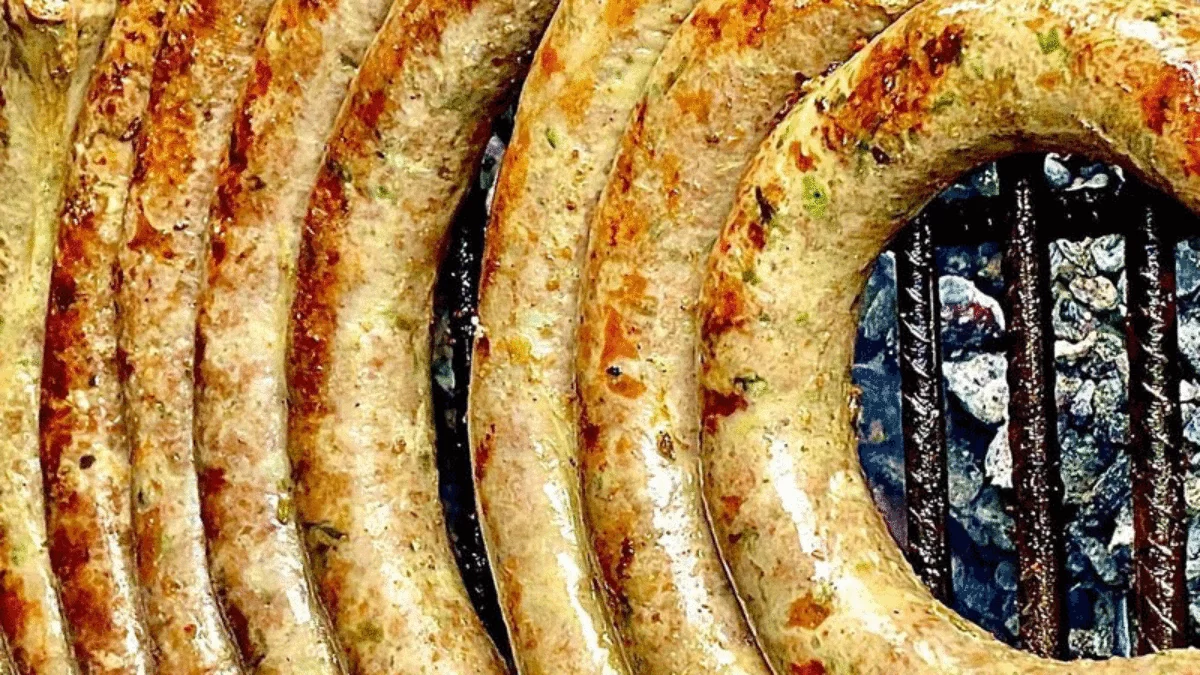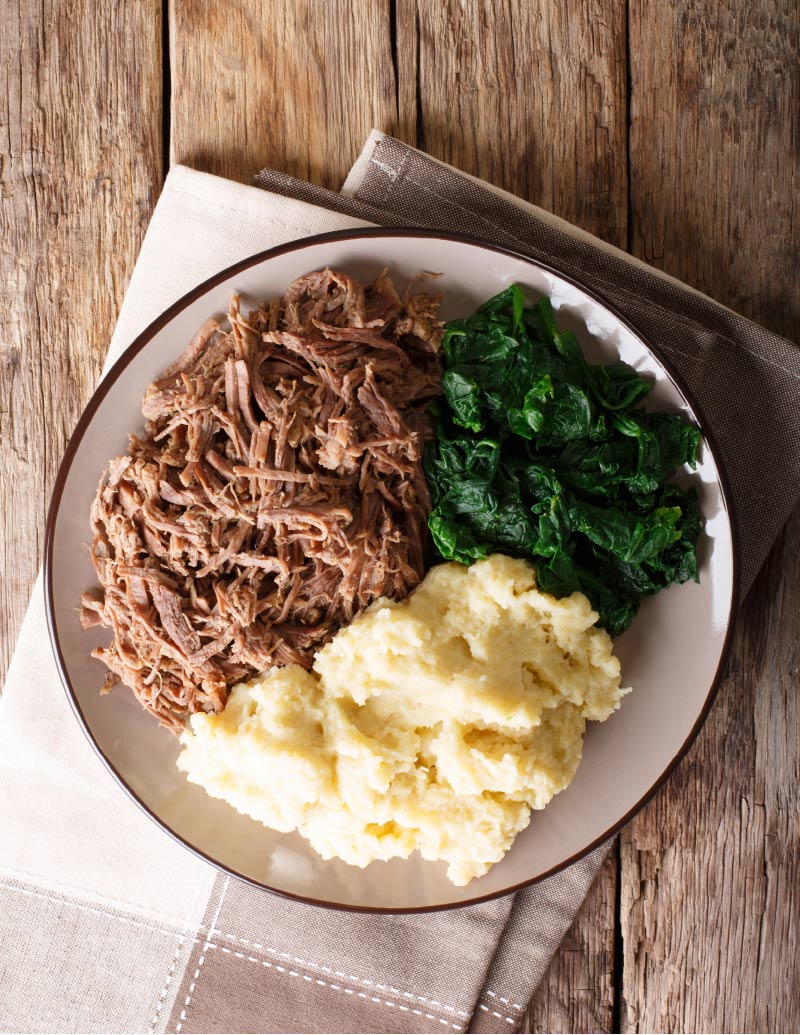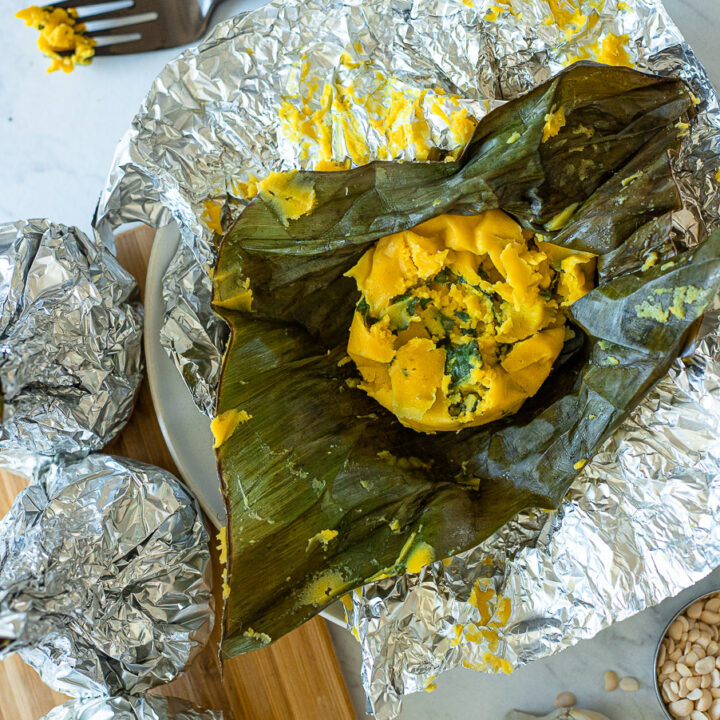Hey 👋🏿
I hope you're surviving another work week.
Here are some interesting traditional African dishes that you should try out at home:
✅ Mtura, the Kenyan blood sausage delicacy.
✅ Seswaa recipe from Botswana.
✅ Koki, the bean cake from Cameroon.
Mtura, the Kenyan blood sausage

Walking through the neighbourhoods in Nairobi, Kenya, in the evenings, you will notice gatherings on the streets enjoying the famous street food, mtura.
Mtura is a delicacy made from a mixture of minced pieces of cow/goat/lamb meat and cooled blood, flavoured with onions, salt, pepper and chilli, stuffed inside a tripe/intestine roasted/grilled over hot charcoal.
It baffles me why the grilling is done by the roadside, usually in the evenings. It could be when people leave work and are most likely hungry and ready to grab a bite or two.
The vendors, usually men, are always clad in a white lab coat with bloodstains, gumboots and sweaty foreheads.
Traditionally, the delicacy was common among the Agikuyu. When slaughtering a goat, they would use its intestines to prepare Mtura, but this only happened on special occasions like ruracios(dowry payment), weddings and rights of passage like circumcision.
However, it is interesting to note that even though the men prepared the meal, only the women were allowed to eat it. Men would eat the other parts of the slaughtered goat. Today, however, the sausage can be enjoyed by anyone.
The mtura should be eaten hot and with bare hands. No fork should be used whatsoever 😃. However, a toothpick sometimes is used reluctantly.
Ingredients
⦿ Raw fresh blood (Cow or goat blood)
⦿ Meat
⦿ Spring onions
⦿ Salt
⦿ Pepper
⦿ Intestines
Method of preparation
➊ Mix fatty meat and blood, then boil till dark brown.
➋ Add salt, pepper and spring onions, then cook for about 20 minutes(No cooking oil is needed).
➌ Stuff the meat in the intestines and tie the ends.
➍ Grill the mtura as you turn it until golden brown. Do not overdo it. It will lose taste.
➎ Cut into small pieces over a chopping board and serve with salt. You can add kachumbari(a vegetable mix of tomatoes, onions and parsley).
Seswaa the shredded meat

Seswaa is the national dish of Botswana that you wouldn't miss at events such as weddings and national holidays. The meat dish, usually prepared by men, requires a bit of strength to pound and shred once cooked.
The ingredients are very forthright; meat on the bone, water and salt.
Traditionally, the stew was heavily salted, and adding anything else aside from the usual ingredients is taboo. However, with time, people started add[ng other spices to improve the taste.
Ingredients
⦿ 500 grams of beef on the bone
⦿ Water enough to cover the meat
⦿ Salt to taste
⦿ 1 Onion (optional)
⦿ Black pepper (optional)
⦿ 3 Bay leaves (optional)
Method of preparation
➊ Cut the meat into large pieces, season with salt and pepper and place in a pot.
➋ Add the peeled onion, black pepper, salt to taste, the bay leaves, and water, then leave to boil for 4 hours.
➌ Check on the meat after 4 hours. It is ready if it falls off the bone with ease. If still clinging to the bone, give it some more time.
➍ When cooked, remove the meat from the slow cooker and let it cool to room temperature.
➎ Using a mortar and pestle, pound the meat down until it resembles shredded beef. If you do not have a mortar and pestle, you can pull the meat apart with two forks until it is thoroughly shredded.
➏ Serve with cornmeal or rice with a side of greens.
Koki, the Bean Cake

If there is one most popular food to find in Cameroon, it is the Koki beans. The bean cake is a moist, delectable pudding-like steamed treat made with coarsely grounded black-eyed peas(native to West Africa).
This popular delicacy is not only found in the streets but also at restaurants at bars as it is a darling to the Cameroonians.
Preparation of the meal can be time-consuming as it involves several processes such as soaking, washing, peeling, grinding, pounding (whisking) and assembling.
Ingredients
⦿ 3 cups Dry koki beans
⦿ 1 + 1/2 cups Palm oil
⦿ 300 ml of Lukewarm water
⦿ 2 g Kanwa'a/limestone
⦿ Salt to taste
⦿ 2 Habarero pepper
⦿ Banana/Bobolo leaves or Aluminium foil
The black-eyed bean is the main ingredient and has its origin in west-Africa. The beans are rich in nutrients, good for digestion and support weight loss.
Red palm oil: Giving the Koki its yellow colour and texture. It is rich in carotenoids, vitamin E and an antioxidant.
Habanero pepper and salt are needed to enhance the taste of the meal.
Water helps with the softness.
Limestone is needed to make the red palm oil and water homogeneous and also helps to prevent tummy aches.
Method of preparation
➊ Soak the dry beans in a good quantity of water overnight.
➋ Wash the beans by rubbing them between your hands and changing the water. Once the beans are clean, sieve and put them aside.
➌ Blend the beans and habanero pepper. Avoid putting a lot of water while blending. Pour the blend into a large bowl.
➍ Heat the palm oil into a pan to a lukewarm state.
➎ Mix the blend for a while, then add salt and lukewarm palm oil. Keep mixing until it is well combined.
➏ Pour lukewarm water into a bowl, add the limestone and mix.
➐ Add that water into the koki mixture and mix. Have a taste to check if the salt is enough.
➑ Clean the Banana leaves. Take two leaves at a time and place them crosswise over a bowl.
➒ Pour in a small portion of the koki mixture. Join the ends of the leaves to the centre and tie them with a kitchen string
‣ Pour a cup of water into a big pot, place a leaf at the bottom and then the bundle. Let it cook for at least 1 hour. Make sure you check and add water regularly to avoid burns.
Note:
➼When buying the beans, choose the already peeled ones to save you some time and energy to peel them yourself.
➼Do not grind your beans into a fine paste- They MUST be coarsely ground.
RIDDLE OF THE WEEK
I am a fruit growing in a tall tree in Africa and the Islands. I have a house full of milk, crunchy food, and the husk all over my shell. Who am I?
Check answer.
Join the Lughayangu Community!

